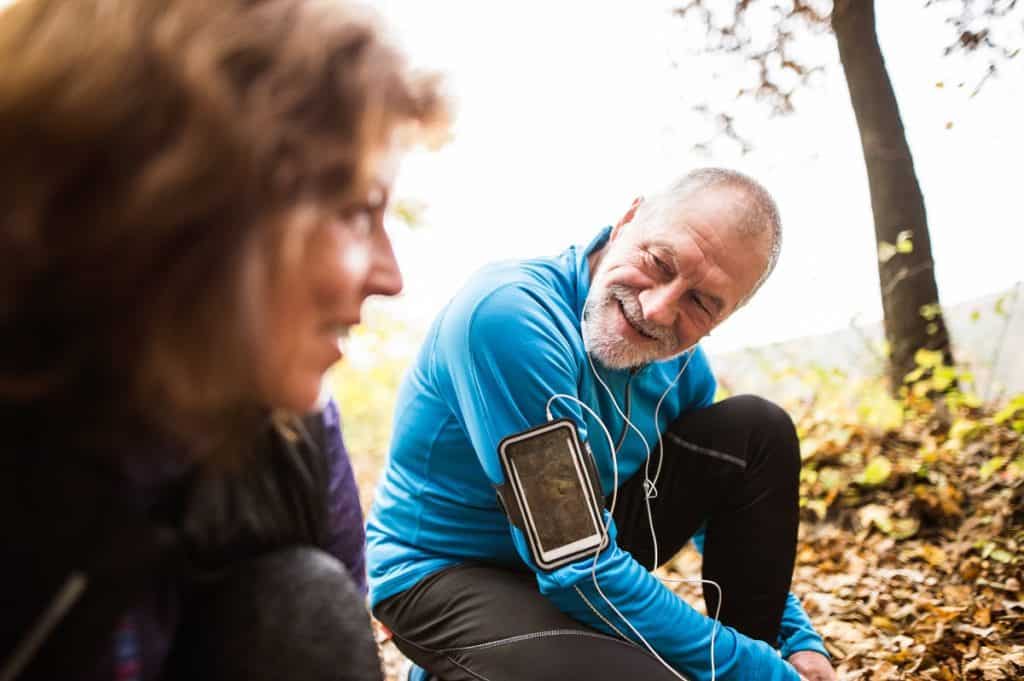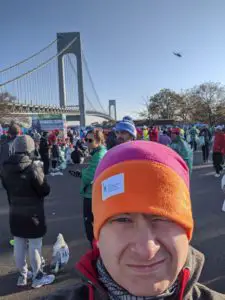Selecting the right pair of running shoes for most log distance runners is process of evolution not revolution. As the distances you run increases using the knowledge you’ve gained from the hours of running in your old pair of shoes should inform your decision about the next pair. These running shoes are some of the best long distance running shoes you will find:
Table of Contents
Shoe Rotation
A lot of runners (including myself) use two or more pairs in rotation to try to reduce the chance of injury through over use. For example, my Hoka Clifton’s have a 5mm drop, where as my Nike Pegasus shoes have a drop of 10mm.
Cushion v Energy Return
Carbon plates have been very popular for a number of years now. Ever since Eliud Kipchoge went under two hours for the marathon distance in a pair of Nike Vaporfly Next% shoes, they have become extremely popular.
However the Vaporflys are a racing car of a shoe compared to Bondi’s by Hoka One One. The Vaporflys are designed to return the energy with a spring like action. They are stiff ride when compared to the plush comfortable ride of the Bondi.
When training the hard spring action of the Vaporfly is a detrimental characteristic in a long distance running shoe. The soft plush ride of a Bondi type shoe makes for a comfortable ride and more importantly minimises the risk of injury.
Durability
Most shoe manufacturers these days know how to put a shoe together that wont fall apart after a few runs. Durability is more a concern of the sole rather than the upper.
To reduce weight it has become popular to put a little rubber on the sole as possible. This isn’t an ideal characteristic in a long distance shoe.
I loved my first pair of Rincon’s be it became quite apparent after 200 miles they where past their peak. That said Id buy them again!
When To Replace Your Long Distance Running Shoes
Its difficult to put a mileage figure on this as there are so many factors that could accelerate the decline of the shoe.
- How Well You Look After Them: If you never clean them they will wear out quicker as the abrasive nature of the dirt and the repetitive nature of running are not a winning combination.
- Keep the insert: Manufacturers ship their shoes with inserts so the shoes keep their shape. I keep the inserts and put them back in after every run. Does this prolong the life of the shoe, its hard to tell but if its good enough for Nike and Asics it cant be a bad idea.
- Shoe Rotation: Two pairs of shoe will last longer than one. One of those pairs will wear out quicker than the other. This observation should be used when selecting your next pair of long distance shoes.
- The Power Of Observation: Take a look at the shoes that you’re about to take for a long run. Are the uppers ripped? Has the patter on the rubber merged into the foam? If so, time for a new pair.
A trusty Old Pair
The foam that runs from toe to midsole to heel will deteriorate over time. Even if you’ve not been running in them. That old pair shoes you’ve loved last year that you forgot about may now be dangerous and possibly cause you an injury.
If you put them on and start pounding the streets, that lovely foam that made them feel like clouds last year could now feel like shoes with half the stack of foam.
How Choose A New Pair
When choosing a new pair consider the following while (if you can) keep in mind your experience with your old shoes.
Good Socks
Strange first tip perhaps but your feet will thank you. I didn’t understand the idea of spending more than 15 dollars on a pair of socks until I tried a pair of Stance socks. Blister management became a thing of the past. They are excellent quality and last twice as long as the previous type I used.
Another thing I now do obsessively is clip my toe nails. Those little corners on the edge are perfectly placed to render a nice pair of socks useless with a great big hole.
Bigger or Wider
Consider a pair of shoes that a half or one whole size bigger than you would normally get. Or a same size pair but a width wider.
Feet swell up after a couple of hours of pounding. I found that this was more of an issue when I first started increasing my miles but it is still a factor I consider. When I’m buying a pair that I’ll be doing long distance in I go up by a half size.
The Upper
The upper should be flexible and durable, breathable and wicking. Choosing a shoe with a thick rubber sole is pointless if the upper is going to fall apart after 100 miles.
Comfort
I once had a of Elevons they were the highest stacked shoes I’ve ever had and felt like the clouds I was running on were on clouds. I hated them. There was no feel and they just seemed to make running hard work (sorry Hoka, you know I love you).
Id given them a go after reading they were good for long distance training runs. I can understand why that would be the case, on paper they were perfect. But they were not for me.
For me the Pegasus and the Clifton are the perfect shoes for long distance running.
Value For Money
It is said that price is what you pay, value is what you get. This is true of long distance running shoes. Buying a pair that are 30 dollars cheaper than the next will only save you money in the short term.
Conclusion: Best Long Distance Running Shoes
Its down to personal preference. Take what you’ve leant from your old pair of shoes if you can. Unless your last pair were a disaster it should be a process of evolution not revolution.
For more information about long distance running take a look here.


